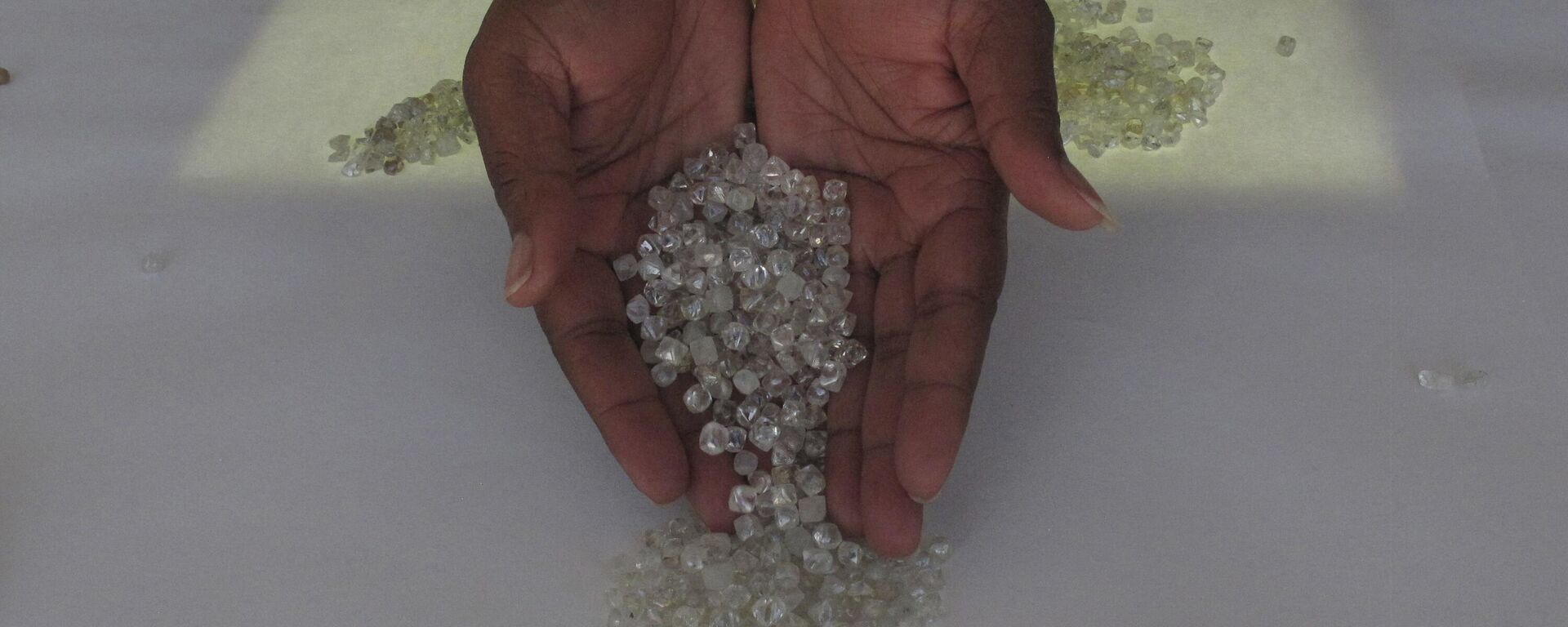https://en.sputniknews.africa/20231108/namibia-begins-to-build-africas-first-green-iron-plant-1063409860.html
Namibia Begins to Build Africa's First 'Green' Iron Plant
Namibia Begins to Build Africa's First 'Green' Iron Plant
Sputnik Africa
Green hydrogen can play a major role in decarbonizing of "some of the world’s hardest-to-abate sectors," the UN's Green Hydrogen Catapult advocacy group has... 08.11.2023, Sputnik Africa
2023-11-08T17:21+0100
2023-11-08T17:21+0100
2023-11-08T17:36+0100
sub-saharan africa
namibia
united nations (un)
southern africa
germany
europe
renewable energy
energy
economy
https://cdn1.img.sputniknews.africa/img/07e7/0b/08/1063415603_0:30:3072:1757_1920x0_80_0_0_467886f33b7f6f537fda8fb829f6e5f4.jpg
Construction of Africa's first green iron plant began in Windhoek, Namibia, on Monday, the country's Investment Promotion & Development Board (NIPDB) stated on X (formerly known as Twitter).The plant will be built with German help: a consortium of three German companies received a federal grant of about €13 million.Robert Habeck, German minister for economic affairs and climate action, noted that Namibia has "ideal conditions" for green hydrogen production and manufacturing of such "clean" iron in this African country will help Germany itself in decarbonizing steel production.Last week, Namibian Finance Minister Ipumbu Shiimi told the nation's parliament that Namibia's economic forecasts were effectively updated from 3.2% to 3.5% for this year and from 2.2% to 2.9% for 2024.Besides, in June, the country banned the export of raw lithium and other critical minerals. This was done to encourage local processing and to get a bigger financial benefit from growing global demand for metals used in clean energy technologies.According to the International Energy Agency's report, in 2020 the steel industry was responsible for "7% of energy sector CO₂ emissions (including process emissions)". The reason for this lies in the way iron is restored. Traditionally, iron is reduced by adding coke from hard coal in a blast furnace, which causes a lot of CO₂ to release. This, in turn, contributes significantly to climate change, the ministry explained.In contrast, a direct reduction plant — the one being built in Namibia — does not require coke and uses natural gas or hydrogen as a reducing agent. Direct reduction with green hydrogen, however, requires a sufficiently high renewable energy potential. The German ministry said that this potential exists in Namibia.The German-Namibian HyIron/Oshivela project will open up the opportunity for the South African country to create a green hydrogen economy, increase its competitiveness and, last but not least, save water resources, Rainer Baake, the special representative for German-Namibia climate and energy cooperation, said.The launch of the plant will create new jobs, and growth prospects seem "huge", managing director of HyIron Iron, Johannes Michels, assured.The start of production is scheduled for the end of 2024. At the first stage, the plant will produce 15,000 tons of iron annually, and in the medium term — up to one million tons per year, German magazine CHEMIE TECHNIK reported.
https://en.sputniknews.africa/20231031/namibia-revises-up-economic-growth-forecasts-for-2023--2024-1063232715.html
namibia
southern africa
germany
europe
Sputnik Africa
feedback@sputniknews.com
+74956456601
MIA „Rossiya Segodnya“
2023
Christina Glazkova
https://cdn1.img.sputniknews.africa/img/07e7/0b/07/1063380906_0:0:673:674_100x100_80_0_0_79628b4d0cd9f29291a57aa13bbf9e7a.jpg
Christina Glazkova
https://cdn1.img.sputniknews.africa/img/07e7/0b/07/1063380906_0:0:673:674_100x100_80_0_0_79628b4d0cd9f29291a57aa13bbf9e7a.jpg
News
en_EN
Sputnik Africa
feedback@sputniknews.com
+74956456601
MIA „Rossiya Segodnya“
Sputnik Africa
feedback@sputniknews.com
+74956456601
MIA „Rossiya Segodnya“
Christina Glazkova
https://cdn1.img.sputniknews.africa/img/07e7/0b/07/1063380906_0:0:673:674_100x100_80_0_0_79628b4d0cd9f29291a57aa13bbf9e7a.jpg
namibia, united nations (un), southern africa, germany, europe, renewable energy , energy, economy
namibia, united nations (un), southern africa, germany, europe, renewable energy , energy, economy
Namibia Begins to Build Africa's First 'Green' Iron Plant
17:21 08.11.2023 (Updated: 17:36 08.11.2023) Christina Glazkova
Writer / Editor
Green hydrogen can play a major role in decarbonizing of "some of the world’s hardest-to-abate sectors," the UN's Green Hydrogen Catapult advocacy group has said. Steelmaking is one of such sectors. Namibia is about to make one step further towards sustainable energy.
Construction of Africa's first green iron plant began in Windhoek,
Namibia, on Monday, the country's Investment Promotion & Development Board (NIPDB) stated on X (formerly known as Twitter).
The plant will be built with German help: a consortium of three German companies received a federal grant of about €13 million.
Robert Habeck, German minister for economic affairs and climate action, noted that Namibia has "ideal conditions" for green hydrogen production and manufacturing of such "clean" iron in this African country will help Germany itself in decarbonizing steel production.
"Namibia has ideal conditions for producing green hydrogen using wind and solar energy. Since Namibia has large iron ore deposits, green hydrogen can be used to produce green iron cost-effectively in the immediate vicinity of the mining sites - an important preliminary product for the decarbonization of steel production in Germany too," Habeck said.
Last week, Namibian Finance Minister Ipumbu Shiimi told the nation's parliament that Namibia's economic forecasts were effectively updated from 3.2% to 3.5% for this year and from 2.2% to 2.9% for 2024.
Besides, in June, the country banned the export of raw lithium and other critical minerals. This was done to encourage local processing and to get a bigger financial benefit from growing global demand for metals used in clean energy technologies.
According to the International Energy Agency's
report, in 2020 the steel industry was responsible for "7% of energy sector CO₂ emissions (including process emissions)". The reason for this lies in the way iron is restored. Traditionally, iron is reduced by adding coke from hard coal in a blast furnace, which causes a lot of CO₂ to release. This, in turn, contributes significantly to
climate change, the ministry explained.
In contrast, a direct reduction plant — the one being built in Namibia — does not require coke and uses natural gas or hydrogen as a reducing agent. Direct reduction with green hydrogen, however, requires a sufficiently high renewable energy
potential. The German ministry said that this potential exists in Namibia.
The German-Namibian HyIron/Oshivela project will open up the opportunity for the South African country to create a green hydrogen economy, increase its competitiveness and, last but not least, save water resources, Rainer Baake, the special representative for German-Namibia climate and energy cooperation, said.
"The project offers the opportunity to build a green hydrogen economy in Namibia, but also to decarbonize downstream value chains. [...] It is particularly important in a water-scarce country like Namibia that water is recycled in this project," Baake said.
The launch of the plant will create new jobs, and growth prospects seem "huge", managing director of HyIron Iron, Johannes Michels, assured.
"In the pilot phase of the Oshivela Project, we will employ 50 people while producing 15,000 Tons of iron. Since the global market for iron stands at two billion tons per year, the growth potentials thereafter is huge," he was quoted as saying.
The start of production is scheduled for the end of 2024. At the first stage, the plant will produce 15,000 tons of iron annually, and in the medium term — up to one million tons per year, German magazine CHEMIE TECHNIK reported.



